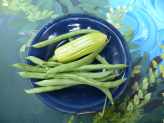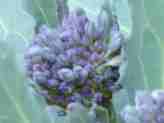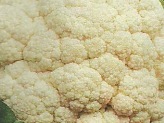How to Grow Kale
Curly, smooth, green or purple
Kale is an old favorite; from curly, to smooth, from dark blue to smart purple, this crucifer has been grown for centuries.
Part of its appeal is the fact that after a summer of growing and lending a substantial presence to the garden, this plant improves in flavor after a frost.
Cutting a few leaves during its active growing phase only gives you a taste of what’s to come; in September when those chill nights arrive, this is a treat.
Sweet and crunchy, kale adds to soups and stews, salads and coleslaw.
As a brassica (in the same family as broccoli ), kale thrives in cooler temperatures, so keep that in mind when you’re planning the crop rotation .
Sowing directly into the garden, where it will grow, or seeding in trays in a bright cool greenhouse so you can transplant soon after the ground thaws are two good options.
One kale plant can provide a lot of leaves;
most gardeners will need only a few for winter harvest, but don’t let that stop
you from seeding a few in empty spots throughout the season.
Kale (rear) and collards (front) grow happily together, requiring
the same conditions
Combined in seed mixes with lettuce, mustard and other greens as mesclun, these are great as a micro green cut when they’re only a few inches tall.
Kale requires light and porous soil, well drained but nutritious. Compost added the previous fall, along with some wood ashes and dolomite lime to raise the pH raked in will provide the perfect conditions.
Keep in mind that as mature plants, kale will be a lot bigger than most mesclun mixes which contain lettuce and other low growing greens. Therefore, I recommend growing them separately or to shelter the lower shade tolerant ones.
Keep in mind that these are big plants – in some cases, depending on the variety, they can be over 2 meters tall (6’) and a meter wide (3’).
They tend to grow as a long stalk, with a bunch of leaves at the top, making them the perfect candidate for intercropping or stacking.
Pests
Common pests are the cabbage white butterfly, with its addiction to all brassicas; pinch them off, or keep the kale covered as soon as you see any of the adult butterflies.
Row covers made of spun bonded polyester, or even recycled sheer curtains protect the plants from most pests.
Make sure that they are weighed down at the bottom to prevent the garden bugs from getting in underneath.
Aphids tend to cluster on the bottom of the leaves, well hidden. If you see some adult ladybugs, transfer them to the kale – they will most likely lay their eggs where there are aphids, for easy access by their larvae.
Sign up for
Out in the O-Garden Newsletter
and get your five part composting E-course - FREE!
Join my
email
group and get tips, information and more monthly-ish.



New! Comments
Have your say about what you just read! Leave me a comment in the box below.